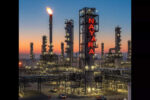Early monsoons in India present a mixed bag for FMCG companies. Rural consumption of staples like soaps and packaged food is expected to rise, while urban sales of summer-centric products such as soft drinks and ice cream are likely to decline due to unseasonal rains.
Okay, here’s a blog post based on the provided Times of India article, aiming for a conversational, engaging tone, and avoiding repetitive phrasing.
Summer Rain Blues for City Businesses, Boon for Rural India? The FMCG See-Saw
Right, let’s talk about the weather. Not just because it’s a classic small-talk starter, but because this year, it’s got its muddy fingerprints all over the business landscape, specifically for Fast-Moving Consumer Goods (FMCG) companies. We’re talking about the usual suspects: your colas, your ice creams, your biscuits – the stuff that fills up our supermarket trolleys.
Here’s the thing: the early monsoon’s been a bit of a double-edged sword. While we city-dwellers have been grumbling about dampened weekend plans and unexpected traffic snarls, rural India’s been quietly celebrating a potential boost to their economic well-being, thanks to predicted improved crop yields.
So, what’s the connection to your fizzy drink? It’s all about where the money flows.
Think about it. A good monsoon? That translates to a potentially bumper harvest. A bumper harvest means more income for farmers. More income for farmers leads to increased spending power in rural areas. And what do people spend on when they have a bit more money in their pockets? The kinds of everyday goods that FMCG companies sell – soaps, shampoos, processed foods, and yes, those tempting ice creams and colas.
This is where the monsoon’s positive impact kicks in for the FMCG sector. Rural markets, always a vital component of their sales, become even more buoyant when the agricultural sector is thriving. Companies see a welcome surge in demand from these regions, helping to offset any slowdown elsewhere.
Now, let’s rewind to those city traffic jams. The early monsoon might be a welcome respite from the scorching summer heat, but for the folks at, say, Amul or Coca-Cola, it’s a slightly different story. The sudden dip in temperatures means fewer people are reaching for that ice-cold drink or refreshing cone. Impulse purchases plummet. Those strategically placed freezers at corner shops, usually buzzing with activity, suddenly feel a bit…lonely.
The impact on urban sales of products heavily reliant on hot weather has been noticeable. It’s not a doomsday scenario, of course. But it throws a wrench into carefully laid-out sales forecasts and marketing strategies. Imagine planning a massive summer campaign for your new mango-flavored ice cream, only to have the weather turn on you. A little frustrating, to say the least!
The article suggests that FMCG companies were already battling a pre-existing slowdown in urban demand before the monsoon arrived. Higher inflation and general economic uncertainty are likely to be contributing factors. People are simply being more careful with their spending, prioritizing essentials over discretionary items. This makes the monsoon’s impact on urban sales even more pronounced.
So, what are these companies doing about it? Well, they’re not just sitting around twiddling their thumbs and watching the rain fall.
One key strategy is to double down on their rural outreach. If the cities are experiencing a lull, they’ll focus their marketing efforts and distribution networks on the areas where the money is flowing. This might involve targeted advertising campaigns, increased promotional offers, and strengthening relationships with local retailers.
Another approach is to diversify their product portfolios. Companies are increasingly looking at offering a wider range of products that are less dependent on seasonal factors. Think healthier snacks, convenient meal solutions, and household cleaning products – items that people buy year-round, regardless of the weather.
Moreover, companies are likely to become even sharper with their data analytics. Understanding consumer behavior, identifying emerging trends, and predicting future demand are crucial in navigating these unpredictable market conditions. They’ll be closely monitoring sales figures, weather patterns, and economic indicators to make informed decisions and adjust their strategies accordingly.
It’s a constant game of adaptation. The FMCG sector is remarkably resilient, and these companies have weathered many storms (pun intended!). They’re accustomed to dealing with fluctuating demand, evolving consumer preferences, and unexpected market disruptions.
This monsoon season presents a fascinating case study in the interplay between weather, economics, and consumer behavior. While the early rains might have dampened the spirits (and sales) of some urban businesses, they’ve also sown the seeds of potential growth in rural India. The FMCG sector, ever nimble, will undoubtedly adjust its sails to navigate these shifting winds.
Ultimately, the story isn’t about doom and gloom. It’s about a sector learning to dance in the rain, adapting and innovating to meet the evolving needs of a diverse and dynamic market. The weather, after all, is just another variable in a complex equation. And these companies are experts at solving equations.
📬 Stay informed — follow us for more insightful updates!







